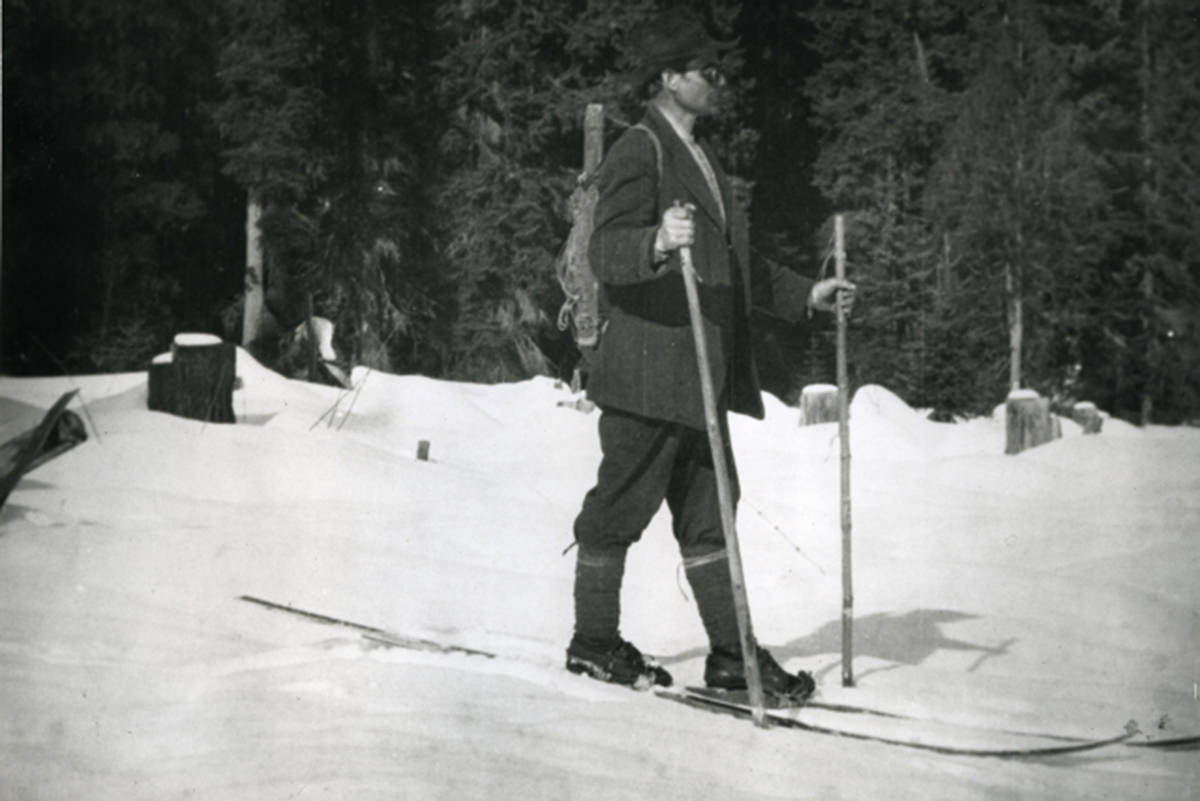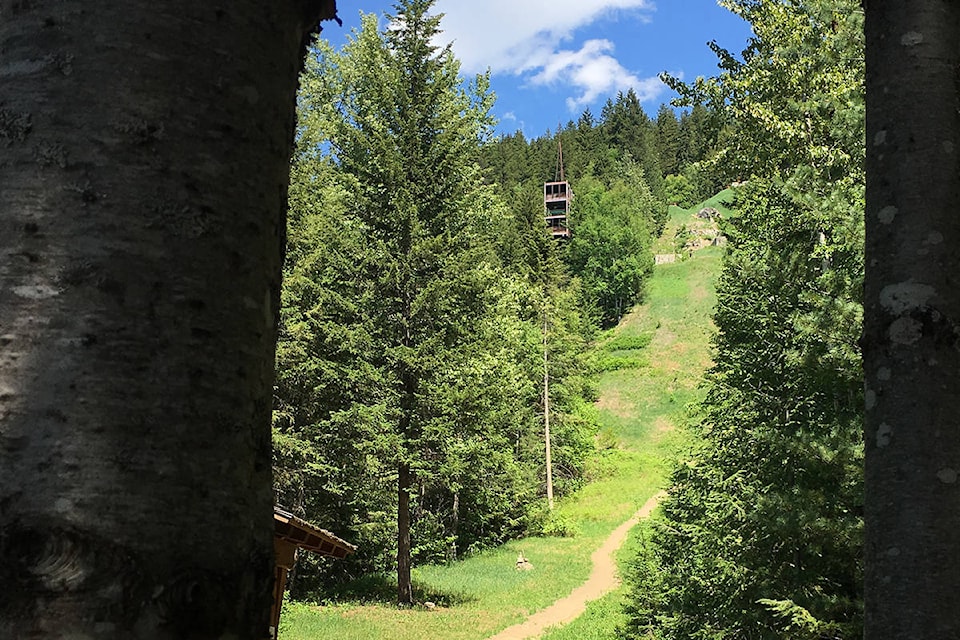The Revelstoke Ski club celebrated their long history at the end of December, with Cathy English giving a speech that went all the way back to English settlers having never seen skis before.
“A young man mounted on a pair of Norwegian snow shoes assayed the task of skimming over the snow covered surface of Front St. But owing to be it cut up considerably by the traffic, he did not make much headway,” English read a quote from a newspaper. “The snowshoes are simply thin slacks of wood about three inches in width and 10 feet in length and turned up in front like the bows of a canoe.”
Though there were ski and snowshoe clubs before, the first official Revelstoke Ski Club formed in 1914, when settlers from Sweden and Norway wanted to see competitive ski jumping in Revelstoke.
Formed in the fall, the club endeavoured to have a winter carnival the following February. They increased their membership from 23 to 100 during that time.
According to English, it was the largest ski club in Canada “for quite some time.”
At that winter carnival Nels Nelson won the ski jumping championship as well as the seven mile cross country race.
“That was the beginning of competitive ski racing and ski events in Revelstoke,” English said.
| Womenâs world champion ski jumper Isabel Coursier on Mount Revelstoke, circa 1920s. (Revelstoke Museum & Archives photo P909) |
A week later Revelstoke held it’s own event of sorts when the local skiers jumped off the Class A jump to prove it wasn’t dangerous. English said they called the event “The Day of Vindication”.
In the late 40s the club fundraised to bring a Norwegian team of skiers to town, despite bad weather delaying the visit, it was a huge success. This was the beginning of The Tournament of Champions.
The club held the international event for several years, hosting athletes from 11 different countries. Spectators came from all over, with CP Rail bringing in sleeper cars for additional accommodation for the visitors. Locals also opened up their homes to billets.
“The ski club put in tremendous amounts of work doing that,” English said.
The club was so ambitious they even applied to host the 1968 winter Olympics in Revelstoke, saying in their application to the province that “Revelstoke has been in the skiing business on a large and international scale for many years, and as a result we know that we have the terrain and snow conditions necessary for such an undertaking”.
The early ski jumps were located on Mt. Revelstoke. It wasn’t until 1963 that a ski area opened on Mt. Mackenzie.
“The development of this mountain is unlimited and could in the future be a great addition to the many attractions which bring visitors to Revelstoke,” said an article in the Revelstoke Review at the time.
| Rope tow on the Hickory Run, on Mt. Revelstoke, circa 1950s. (Revelstoke Museum & Archives Photo 4457) |
Despite the long history of ski jumping in Revelstoke, as well as it being the place that the vorlage technique was developed, the sport came to an end in 1975.
According to Freddie Beruschi, who also spoke at the Ski Club Alumni event, around that time Revelstoke had an extremely successful hockey team which drew spectators away from The Tournament of Champions, beating the ski club financially.
At that point the club split off into two parts, nordic and alpine, Beruschi said.
The Revelstoke Ski Club even owned the Mt. Mackenzie ski hill for a short time. Beruschi said the kids went door to door asking for $5 to SOS-save our ski hill.
A few years later the ski hill was taken over by the city and was eventually developed into the resort we see today.
English acknowledged both the ski club and the city for their commitment.
“They were determined that Revelstoke was going to have a ski hill,” she said.
Right now the Revelstoke Ski Club has more than 130 skiers between ages 6 and 16.
Â
@RevelstokeRevue
editor@revelstoketimesreview.com
Like us on Facebook and follow us on Twitter.

